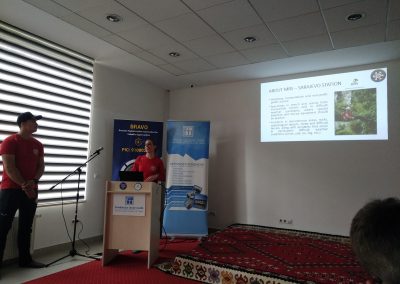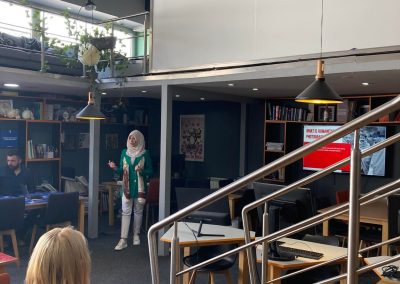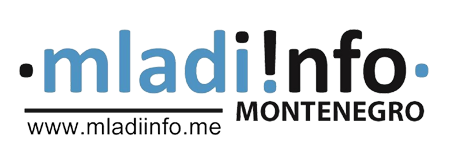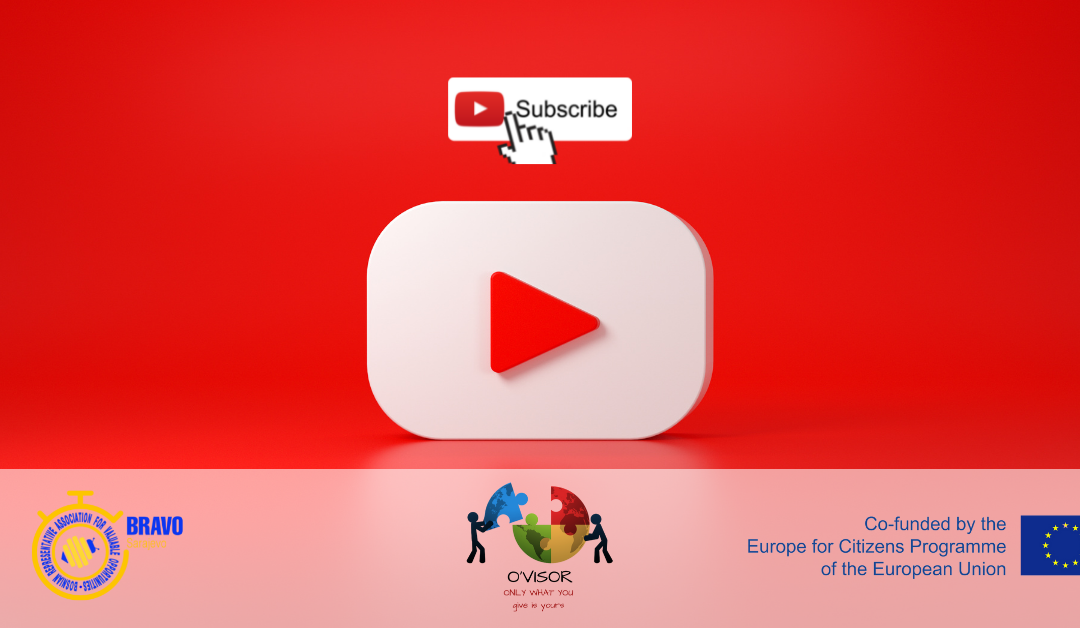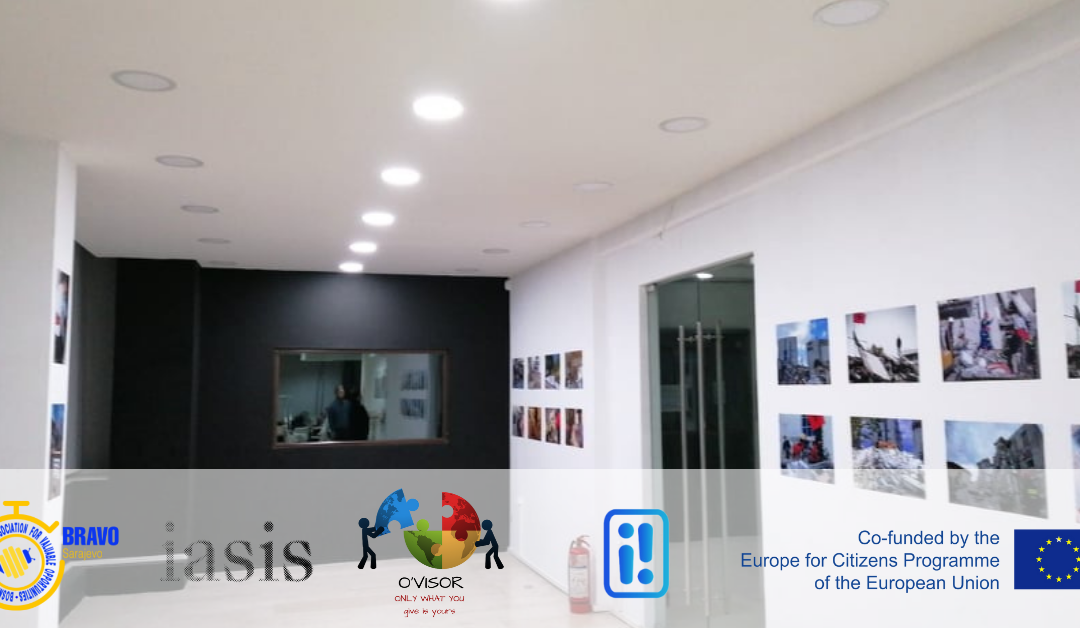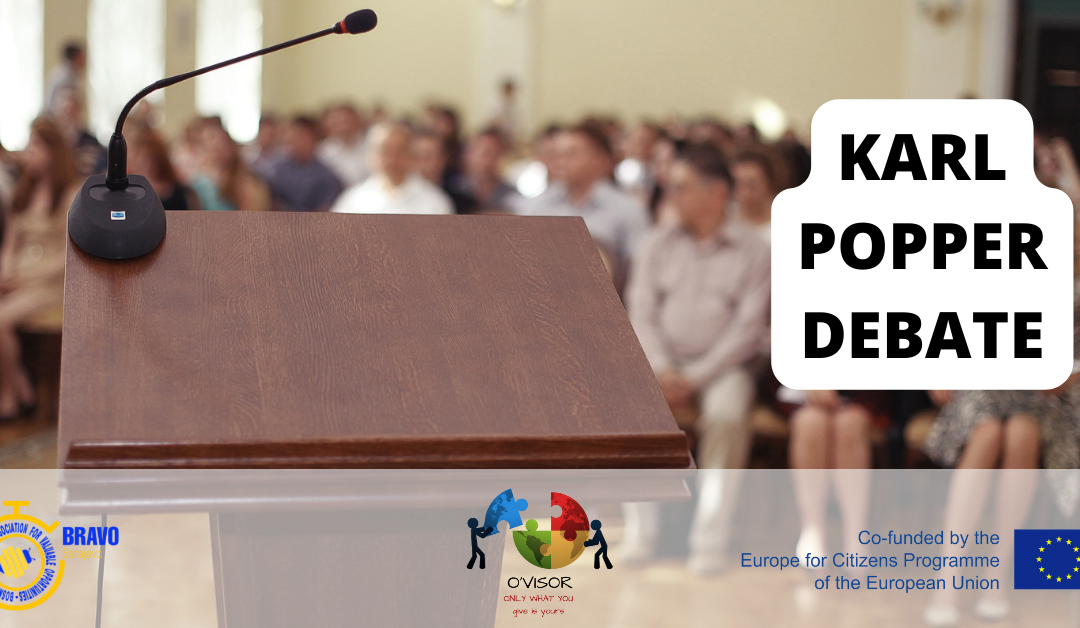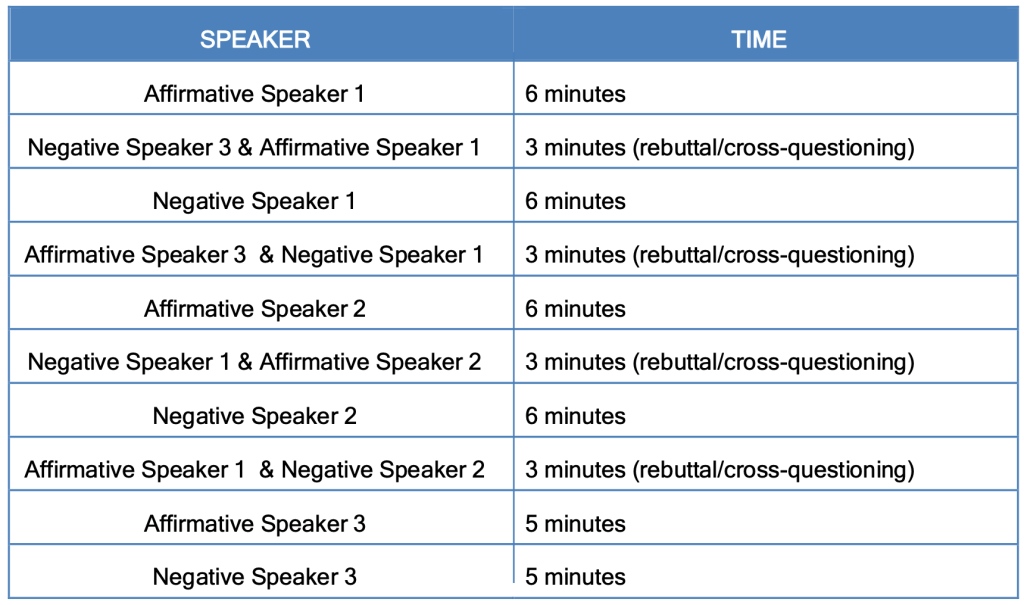1. INTRODUCTION
1.1. OBJECTIVES AND PRINCIPLES OF DEBATE COMPETITION
The aim of the O’visor Debate Competition is to raise awareness about volunteering and charity, and also to facilitate in an attractive way the development of skills, abilities, and knowledge of the participants. This debating is intended to educate while teaching hardwork and social etiquette as well. Favoring one or more of these aspects at the expense of others is a misunderstanding of the fundamental principles of competitive debating. Nevertheless, the formative aspect is essential given the age of participants as theirapproach to life is being formed. Bearing this in mind, participants agree:
a) to adhere to the principles of fair play, decent behavior and mutual respect to the best of their abilities,
b) not to knowingly use untrue information,
c) to debate given motions.
The adjudicators and coaches of individual teams agree to conduct themselves in the same spirit and, in harmony with that, to prepare and evaluate the debaters.
1.2. CORNERSTONE DOCUMENT
These Rules apply to “Karl Popper” format debates of the O’visor Debate competition organized by BRAVO – Bosnian Representative Association for Valuable Opportunities. All partners must adhere to the rules set out below.
This document is valid for the whole debate period and can only be changed by the leading organizator, BRAVO – Bosnian Representative Association for Valuable.
2. KARL POPPER FORMAT DEBATE
2.1. MOTION
A debate motion is a clear and controversial statement that is possible to be proposed or opposed reasonably. A motion has to be worded in a manner that sets up the scope of the debate and indicates the position of the Affirmative party.
A motion can:
- claim a controversial fact to be true (a factual motion, e.g. “Criminal behaviour is genetically predetermined”, “Development in China leads to revolution”)
- propose a measure, action or method (a proposing motion, e.g. “Marijuana should be legalised”, “We should support the development of nuclear energy”)
- evaluate a particular fact or activity, or compare particular facts or activities (value motion, e.g., “Corporal punishment is unjustifiable”, “Economic sanctions bring more harm than good”, “Protection of the environment is more important than economic development”).A motion can require a specific proposal or plan to solve an issue that arises from its wording (e. g. “The assessment system of high school students should be changed” “Police and prosecutors should have more powers when fighting corruption”). This type of motion is marked with a note “(plan)”.2.2. TEAM ROLESTwo teams participate in each debate. One team proposes the motion (the Affirmative party), the other one opposes the proposition of the motion (the Negative party).2.3. TEAM MEMBERSEach team has ONLY three members of whom all three participate actively in the debate. Each team announces the names and roles of the three active debaters before the commencementof the debate. This layout IS NOT to be changed during the debate.2.4. ADJUDICATORSOne adjudicator or a panel of adjudicators decide the winner of the debate. All adjudicators act independently and impartially.
The impartiality of an adjudicator is particularly breached by:
a) being a coach of one of the teams debating or preparing with one of the teams for the debate, or
b) being in a close relationship with any of the debaters.
Adjudicators SHALL NOT intervene in the debate except for preventing physical violence or tackling an obvious breach of the Rules that cannot be dealt with later (e.g. breach of the speakers’ order, serious barracking).
2.5. DEBATE ETHICS
The chairperson of the panel can dismiss the debate after consulting other members of the panel in cases of a serious breach of the Code of Ethics. The team breaching the Code shall lose the debate by default.
3. DEBATE RULES
The debate begins with a moderator who will give a welcoming speech and announce the resolution. His/Her role is to control the time and make sure that debaters follow the discipline. The debate is composed of ten parts. Six of these consist of speeches – that is, uninterrupted presentations by a designated speaker. The remaining four consist of cross examination – that is, a series of questions and answers involving one speaker from each side. Realization of debate is represented in the following table:
3.1. COURSE OF THE DEBATE AND INDIVIDUAL SPEAKERS’ ROLES
3.1.1. FIRST AFFIRMATIVE (A1)
The first speaker of the Affirmative party (A1) starts the debate. They have the right to define the motion.
A1 delivers argumentation supporting the motion.
In a “plan” motion debate, A1 specifies “the ill” (the issue) that is to be solved by the motion, identifies its blame (a cause of the issue), introduces cure (a particular plan) to solve the cause or rather its blame, and presents the benefits of the proposed solution.
After the end of their speech, A1 shall answer the questions raised by N3 (third speaker of the Negative party).
3.1.2. FIRST NEGATIVE (N1)
The first speaker of the Negative party (N1) accepts the definition. Should they consider the definition to be against the Rules, they explain its shortcomings and offer a corrected one.
If A1 did not define the motion, N1 can offer their own definition.
N1 primarily rebuts or casts doubt upon the Affirmative argumentation. N1 has the right to present their own constructive argumentation opposing the motion.
In a plan motion debate, N1 attacks some or all points of the Affirmative argumentation.
After the end of their speech, N1 shall answer the questions raised by A3 (third speaker of the Affirmative party).
3.1.3. SECOND AFFIRMATIVE (A2)
If there was a definition clash, A2 can address this clash. Should they not accept the corrected definition, they can only defend the original definition presented by A1. Should the first definition be presented by N1, A2 can attack it, explain why it is against the Rules and offer a corrected one.
A2 primarily rebuilds the argumentation of A1 that N1 rebutted/cast doubt upon. At the same time, they rebut or cast doubt upon the Negative constructive argumentation if it was introduced. A2 can deepen and complete the Affirmative argumentation.
After the end of their speech, A2 shall answer the questions raised by N1.
3.1.4. SECOND NEGATIVE (N2)
N2 rebuts or casts doubt upon the Affirmative argumentation in the form presented – rebuilt and completed – by A2. They deepen the analysis without bringing in a whole new way of rebuttal.
N2 also rebuilds the Negative constructive argumentation if it was introduced by N1. They shall not bring new arguments for its support but can support the arguments already made with new particular evidence.
After the end of their speech, N2 shall answer the questions raised by A1.
3.1.5. THIRD AFFIRMATIVE (A3)
A3 signposts and analyses the key clashes of the debate from the viewpoint of the Affirmative party and tries to persuade the adjudicator that their team has defended the motion with its case. Doing that, A3 rebuilds arguments attacked by N2.
Should a Negative constructive argumentation have been presented, A3 tries to persuade the adjudicator that this case has not rebutted/cast doubt upon the Affirmative argumentation.
In a plan motion debate, A3 tries to persuade the adjudicator that the Affirmative party has successfully defended all the points of the plan.
A3 shall not bring any new arguments or evidence during their speech with the exception of reacting to the new ways of rebuttal presented by N2.
3.1.6. THIRD NEGATIVE (N3)
N3 signposts and analyses the key clashes of the debate from the viewpoint of the Negative party and tries to persuade the adjudicator that their team has managed to rebut or cast serious doubt on the affirmative case defending the motion. They explain how the Negative constructive argumentation has supported the rebuttal of the Affirmative case (if it was introduced).
In a plan motion debate, N3 tries to persuade the adjudicator that the Negative party has successfully rebutted at least one of the key points of the plan (ill, blame, cure, benefits).
N3 shall not bring any new arguments or evidence during their speech
3.2. TIME LIMITS
First and second speakers on both teams have 6 minutes each for their speeches. Each cross- questioning takes 3 minutes. Third speakers on both teams have 5 minutes each.
Should the speaker continue to speak after the time limit, his words from that point on will NOT BE taken into consideration with the exception of a brief conclusion of a thought started withinthe time limit.
During the course of the debate, the affirmative team has the right to take 5 minutes and the negative team 7 minutes for preparation before their individual speeches or for preparing for the cross-questioning.
3.3. COMMUNICATION DURING DEBATE
Except for the preparation time (taken by either team), the members of the team are not allowed to speak to each other during the course of the debate.
It is not permitted for the team to communicate with a person that is delivering a speech. Any communication between a coach or a not debating team member and the team is unacceptable.
Should the coach do the timekeeping, they are allowed to give the standard time-keeping signals.
3.4. DEBATING IN TEAMS
Even though speakers differ in their particular roles in the debate, they all have to defend and develop their team’s argumentation and act as one to support their team in the debate.
An argumentation with grave contradictions between speakers shall be considered to be obviously weak. The other team only has to point out such a mistake to rebut/cast doubt upon this type of argumentation.
3.5. DEFINITIONS
The purpose of a definition is to explain how the Affirmative party understands the motion and what they want to discuss.
The Affirmative party has the right to define the resolution in any way provided that the:
- a) definition does not depart from the common meaning of the motion,
- b) meaning of the words is not twisted purposefully,
- c) definition is in other respects “reasonable”.
Whether or not the definition departs from the common meaning of the motion shall be assessed by the adjudicator from the point of view of an average, intelligent individual.
A definition is not reasonable when it considerably narrows the room for argumentation of the other team or puts that team into impossibly defensible position.
In a plan debate motion, a definition is the specification of an ill (an issue). N1 can attack the specification of an ill when the specified issue is obviously not related to the motion. If the Negative party proves that the ill is not related to the motion, it wins the debate.
The definition clash is taken into consideration only in case the definition has been attacked according to the provisions of sections 3.1.2 or 3.1.3. If the other team fails to explain the shortcomings of the definition or if it does not offer a corrected one or if the definition clash is started late, the adjudicator shall not take this clash into consideration.
3.6. CLASHES AND BURDEN OF PROOF
It is an obligation of the Affirmative party to argue in support of the motion.
During adjudication, delivered argumentation is considered defended until rebutted (cast doubt upon) by the other team. However, adjudicators do not take into consideration argumentation that is obviously untrue or irrelevant.
Both teams shall present the impacts of their argumentation on the motion. In proposing and value motions such impacts shall include an introduction of a generally accepted value or more values that the argumentation helps introduce or prevents from being introduced. Arguments that have no clear impact on the motion are not taken into consideration.
3.7. USE OF EVIDENCE
Debating uses oral presentation exclusively. Physical, visual etc. evidence that a debater presents or shows without description are not taken into consideration.
Debaters shall be able to present sources of evidence that they quote in support of their claims. That does not apply to common knowledge. What is and is not common knowledge shall be evaluated from the viewpoint of a secondary school graduate.
The adjudicator can request a presented piece of evidence to be shown right after the debate. Such evidence can be shown even on an electronic device.
3.8. WINNING THE DEBATE
The debate is won by the Affirmative team if, on the basis of its argumentation, it upheld the resolution debated. The debate is won by the Negative team if, on the basis of its argumentation, it rebutted the affirmative support of the motion or cast serious doubt upon it.
The Negative party does not necessarily have to disagree with all of the points of the Affirmative party’s support of the motion. It is sufficient to prove that the Affirmative party’s argumentation does not have an impact on the motion (i.e. not supporting the motion) or that this impact is negative (i.e. disproving the motion) to win the debate.
In a plan motion debate, the Affirmative party wins if it defends all 4 key points of its argumentation. The Negative party wins if it rebuts at least one part of the logical chain of the affirmative argumentation (ill, blame, cure, benefits) or if it shows that the ill presented by the Affirmative party is not related to the motion.
The Adjudicator shall take into consideration the result of each clash and the importance of presented arguments when making the final decision on who has won the debate. They evaluate the argumentation of the parties from the viewpoint of an ordinary and reasonable person regardless of their own opinions on the debated issue and their expertise.
3.9. NEGATIVE CONSTRUCTIVE CASE
The Negative party does not have to present its own constructive argumentation in the debate. Its main objective is to rebut the affirmative support of the motion. However, if the Negative party does decide to present their own constructive argumentation, it is still their task to rebut the affirmative argumentation and, at the same time, defend their own constructive argumentation. The Affirmative party shall then as well rebut the negative constructive argumentation besides its primary goal of supporting the motion. Affirmative and negative cases must be mutually exclusive – they cannot coexist side by side and be both valid at the same time.
If the negative team fails to prove the validity of its own negative constructive argumentation, it still has a chance to win the debate, if they rebut the affirmative case.
There is no place for a negative constructive argumentation in a plan motion debate. However, the Negative party can present its own disadvantages of the discussed plan.
3.10. CROSS-QUESTIONING
The objective of a cross-questioning is to:
a) find and reveal the weaknesses of the opponent’s argumentation,
b) prepare the grounds for the team’s own argumentation,
c) clarify the last speaker’s speech.
The questioner asks and the replier answers. All the questions and answers shall be concise and clear. The questioner is allowed to ask whatever questions they deem necessary if they prove to be linked to the motion afterwards. The replier is allowed to reject a personal question. The questioner is allowed to stop the replier whenever they obviously speak off- topic.
Information acquired from cross-questioning is to be used during the following course of the debate by the questioner’s team. If it is not used in the main speeches it will not be taken into consideration by the adjudicator.
4. DEBATE ASSESSMENT
4.1. CONTENT
Content is comprised of the arguments that are used, regardless of the quality of the oratory and presentation. In the category of content, the adjudicator primarily evaluates:
a) quality, depth and logical correctness of the analysis of the issue linked to the motion, i.e. if the speakers correctly identify, understand and explain the basis of this issue,
b) relevance of the arguments to the motion, i.e. to what extent the presented argumentation supports or rebuts the motion and if its impact on the motion is clear from the speech,
c) quality of evidence, i.e. if and to what extent the presented evidence supports the team’s argumentation, if they come from reliable sources, and if the speaker understands its content and is able to explain it,
d) consistency of argumentation in one speech and across all the team’s speeches, i.e. if all the arguments complete and support each other or contradict themselves.
The more an argument is fulfilling all the above-mentioned criteria, the stronger it is in terms of supporting the motion or rebutting its support.
4.2. FORM
In the category of form, the adjudicator primarily evaluates:
a) style – choice of adequate language tools (extent of vocabulary, ability to present an idea, speech composition, rhetoric figures etc.),
b) delivery – vocal part of the speech (articulation, intonation, phrasing, pace), nonverbal communication (facial expressions, gestures, posture, contact with the audience),
c) fluency and persuasiveness – adequate and gripping introduction and conclusion, engaging the audience (readiness, humor), being able to point out the important parts of the speech, delivering the speech – not just reading it, elimination of redundant and boring phrases and formalism,
The use of informal language shall be penalized. Debaters address each other formally and wear formal attire.
4.3. STRATEGY
In the category of strategy, the adjudicator primarily evaluates:
a) consistency of the team’s case – having a clear objective and purpose, fulfilling a speaker’s role in the debate,
b) following colleagues’ and opponents’ speeches, reacting to significant points of the preceding speeches, using information from cross-questionings,
c) structure of the speech – having a clear introduction, body, and conclusion, dividing the body into logically connected points,
d) time management – filling the allocated time and not exceeding it (margin +/- 30 s), dedicating proper time to clashes on the basis of their importance for supporting/rebutting the case.
4.4. POINTS
Points are a supplementary criterion for assessing the debate. They are not crucial for the determination of the winner of the debate; adjudicators can vote for the team with lower points (“low-point win”).
Awarding less than 50 and more than 100 points (in total for content, style, and strategy) to a debater is fundamentally unacceptable. An average debater is awarded 75 points.
An adjudicator is allowed to add or subtract up to 5 points for the cross-questioning. This adjustment shows how the level of cross-questioning differs from the level of their speech (should the level be the same, there is no need to adjust). There is only one adjustment for both the cross questionings in first speakers.
Adjudicators award points on the basis of “the points table” that constitutes an appendix to these Rules. An adjudicator shall award similar performances with a similar amount of points taking the standard of other adjudicators into consideration. The task is to obtain similar points for similar speeches regardless of the particular adjudicator.
4.5. REASONS FOR DECISION AND FEEDBACK
Adjudicators justify their verdict on the basis of their records after the end of the debate. The justification shall be brief, clear and persuasive, based on the analysis of the argumentation that took place in the debate.
Advice for the debaters on how to tackle the errors they committed during the debate and howto improve their abilities is included in this justification. Each feedback shall be encouraging.
Follow our various social media channels to find out how to get involved in your local communities: Website, Facebook, Instagram.
Remember, ONLY WHAT YOU GIVE IS YOURS.
#BRAVO #BRAVOBIH #MAKETHEWORLDWONDER #BRAVOVISOR #ONLYWHATYOUGIVEISYOURS #EuropeForCitizens





